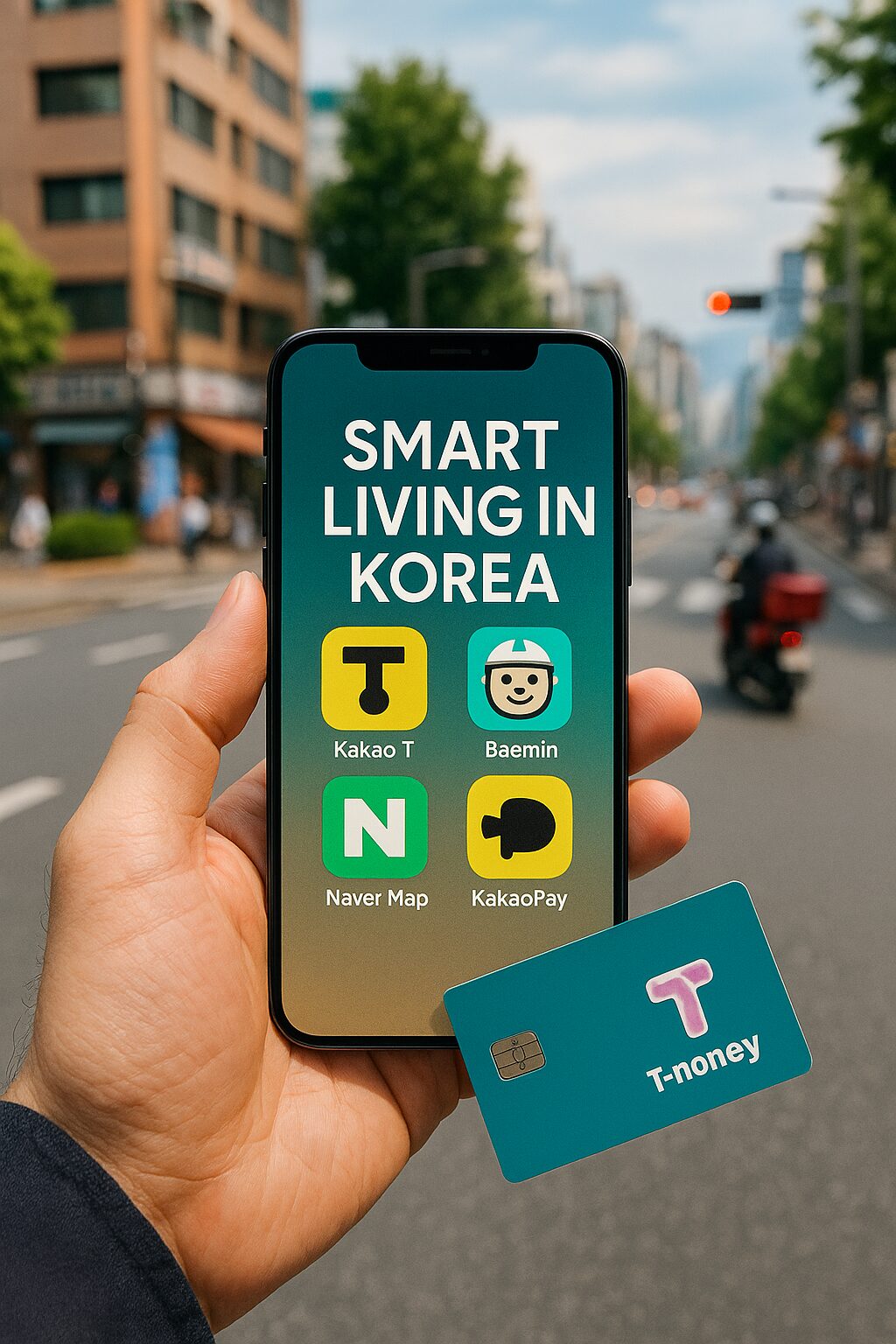Live better, spend smarter, and thrive in Korea with just your smartphone.
Why Smart Living Matters for Expats
Living abroad isn’t just about adventure – it’s about adapting smartly. For digital nomads, students, or expats in Korea, making the most of mobile tools isn’t optional — it’s essential. With the right apps, you can unlock cheaper transport, better food, free Wi-Fi, real-time translation, and even emergency help. Let’s break down the best tech to live smarter — and cheaper — in Korea.
All-in-One Navigation: KakaoMap & Naver Map
Google Maps doesn’t work well in Korea. Instead, use:
- KakaoMap: Real-time bus/subway routes, walking directions, reviews.
- Naver Map: Best for hiking trails, biking routes, and tourist landmarks.
Bonus: Both offer English UI and real-time traffic alerts.
Public Transport & Bike Rentals: Kakao T + Seoul Bike “Ddareungi”
- Kakao T: All-in-one for taxis, buses, metro. You can even book airport limos.
- Seoul Bike (따릉이): 24/7 bike rental via QR scan. App in English.
Tip: Use at off-peak hours to avoid surcharges and enjoy low daily passes.
Mobile Payments: KakaoPay & NaverPay
No cash? No card? No problem.
- KakaoPay: Pay at convenience stores, cafes, restaurants with just a QR.
- NaverPay: Best for online shopping. Secure and widely accepted.
Most Korean merchants now accept one of the two.
Language Hacks: Papago & Google Lens
Communication made easy:
- Papago: Korea’s best real-time translator for full sentences, signs, slang.
- Google Lens: Scan menus, translate posters or handwritten signs instantly.
These two combined eliminate most language barriers instantly.
Super App for Everything: Coupang Eats & Baedal Minjok
Korea’s food delivery culture is ultra-fast:
- Coupang Eats: Clean UI, good for beginners.
- Baemin (배달의 민족): Korea’s most popular app with cashless orders.
Both support card + mobile pay and offer English versions via settings.
Health & Emergency: GoodDoc & 119 Emergency App
- GoodDoc: Book clinics/hospitals online, compare prices, see ratings.
- Emergency Ready App: Government app for disasters, fire, ambulance.
For any expat, having these can literally save lives.
Housing & Community: Zigbang & Meetup
- Zigbang: Find short/long-term housing with map filtering.
- Meetup: Connect with expats, join language exchange, hobby clubs.
Don’t isolate. Building community is key to staying healthy and happy abroad.
Summary: Build Your Own Smart Korea Toolkit
| Category | Must-Have App |
|---|---|
| Navigation | KakaoMap, Naver Map |
| Transport | Kakao T, Ddareungi |
| Payments | KakaoPay, NaverPay |
| Language | Papago, Google Lens |
| Delivery | Coupang Eats, Baemin |
| Safety | GoodDoc, Emergency Ready |
| Life | Zigbang, Meetup |
Each app helps reduce stress, save money, and maximize comfort — especially if you’re new to Korea.
Real Expat Review
“I moved to Seoul with just a backpack and my phone. With Papago, KakaoMap, and Coupang Eats, I felt like I’d lived here for years in just 2 weeks. Total life-saver.”
— Carla (Digital Nomad from Canada)
Final Tip: Automate and Thrive
Set up automatic mobile payments, save your most used locations, and link your expat bank card (like Wise or Revolut) to KakaoPay. With just 2 hours of setup, your entire life in Korea becomes 80% automated.
Want to Live Smarter in Any Country?
These app strategies don’t only work in Korea. Apply the same survival tech stack in Japan, Vietnam, or even Germany. Mastering smart living = saving money + gaining time.
Coming Up Next
The 1-Month Rule That Changed Korea’s Saving Culture – And How You Can Apply It
→ Discover how one simple rule turned Koreans into the world’s top savers.


